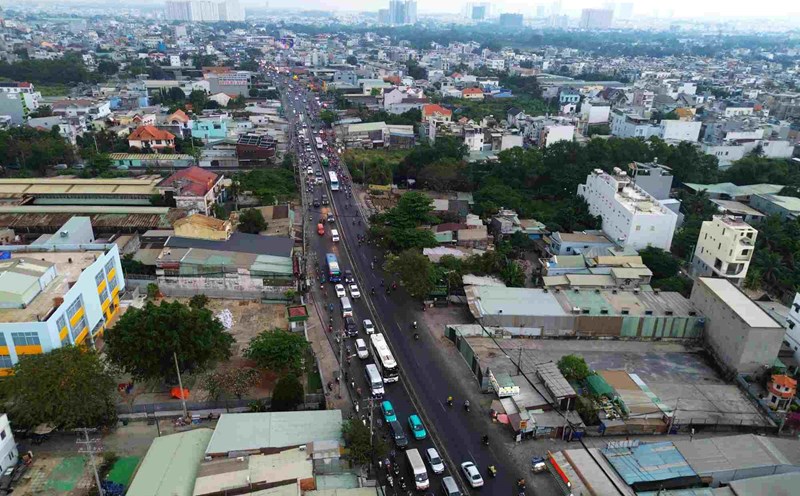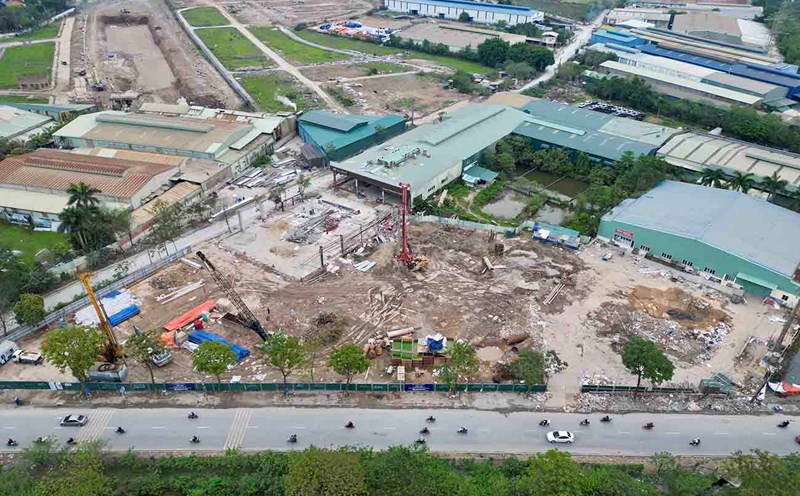THE PERFECT BEAUTY
I don’t know how many times I felt my hair stand on end when my vision touched the mysterious jade green of Nho Que river. Not a thin jade, but a thick, pure block of turquoise, with a green color completely different from the water of all other rivers.
The skin of Nho Que is not as pale as the sky, not as white as the waves, not as red as alluvium, and rarely shows the color of loess. The dark blue water is always calm despite flowing rapidly through the riverbed of jagged rocks, showing a haughty attitude, calmly living the life of a river.
Only rarely does one see the skin change color. Even when the mountains and forests are lush green during the rainy season, Nho Que's skin turns green, but it is a new green, more like the color of Japanese green tea (matcha) than the usual green. Or during the flood season, the reddish-pink color of the mud is also transformed by Nho Que into a very strange shade of cold pink.
Because the turquoise color of Nho Que is its own color, created by the minerals cobalt and copper, and not taken from the external color as flesh like other rivers. That is why, after rare changes in a flash, Nho Que returns to its usual appearance.
Beauty is judged by her figure and skin. According to that standard, Nho Que has all the qualities of a beauty. In addition to her faithful and gorgeous skin, the shape of the Nho Que line is also much more majestic. The shape of Nho Que seen from above is truly a silk strip flying in the air, controlled by the hand of a beauty engrossed in a dance.
The invisible hand movements transmit energy to the silk strip, creating countless waves that run endlessly, curving up and down, sometimes straight like a line, sometimes curving around, truly myriad in form, constantly changing, difficult to grasp with the agitated eye.
The height of the terrain and the structure of the mountains in the Dong Van - Meo Vac stone plateau (Ha Giang) have made Nho Que have a graceful shape like clouds and silk. This river is truly a mountain girl with perfect demeanor and character, creating a harmonious and balanced point with the majestic mountain landscape imbued with the heroic character of men.
If it weren’t for the soft, supple look of this turquoise sea, perhaps the rocky plateau’s wilderness wouldn’t have such an overwhelming appeal. But how could it be so lonely, because where there are heroic men, heaven and earth will surely produce charming women.
Imagine, the thousand meter deep Tu San (Devil's Tooth) Canyon - considered the deepest canyon in Southeast Asia - with two 700 meter high cliffs that run vertically along the entire length of 1,700 meters of the canyon, what would it be like without the blue glass lake flowing through it? Tu San would not be the most majestic pass.
What would the spectacular scenery of Ma Pi Leng (horse nose) pass connecting Dong Van and Meo Vac be like without the Nho Que river hidden deep below? Ma Pi Leng still soars in the clouds but lacks the qualities to create the appeal of the most beautiful pass in the group of "four great peaks".
Mountains, rocks, sky, and clouds have all fallen in love with Nho Que for thousands of years. What is the human soul to resist? Therefore, anyone who sees Nho Que will be utterly infatuated. The Hmong people were so captivated by its beauty that they stopped their wandering horses and chose this place as their settlement.
During my first visit to Nho Que, I could not help but desire to immerse myself in that enchanting water, and then spent several hours finding a way from the top of the sky to the bottom of a thousand meters deep, in exchange for only a few minutes of being immersed in the Nho Que stream, but still felt extremely blessed.
Also on this river, a few years before, an old friend with the nickname Du Gia, famous in the "backpacker" community, boldly carried an inflatable boat and waded down the Nho Que river with the intention of drifting across the Tu San gorge to satisfy his arrogant desire.
But it was no use, the boat had only drifted a few dozen meters when it was cut by sharp rocks on the riverbank or in the riverbed. When it was about to sink in the rushing water, Du Gia was guided by a Hmong man to find a way to bring both himself and the torn boat to shore.
The end of that daring game was a drunken party at Dong Van market, leaving two men, one Kinh and one Hmong, collapsed in bowls of corn wine with the bottoms exposed. Du Gia still laughed proudly when recalling this story later, not caring that people now take boats through Tu San canyon like going to the market thanks to tourism services.
WATER OF LIFE
Perhaps, Nho Que is the most precious gift that nature has given to this borderland. Nho Que River originates from Nghiem Son mountain (Yunnan, China), with a total length of 192km, however, the river section flowing in Vietnam territory is only about 46km.
The Nho Que River section flowing through Lung Cu and Ma Le communes (Dong Van district, Ha Giang province) is about 4-5km long and is considered the border between Vietnam and China. From here, the river continues to flow southeast to Cao Bang province and joins the Gam River.
With only 46km, but on the cat ear rock of the Dong Van Karst Plateau Global Geopark system, Nho Que River has a strong flow with countless rapids and misty water. In 2009, the Ministry of Culture, Sports and Tourism ranked Nho Que River area as one of the "Unique Tectonic Valleys" of Vietnam.
Together with Tu San Canyon and Ma Pi Leng Pass, Nho Que River creates not only majestic and overwhelming landscapes but also poetic and surreal, like a paradise in the middle of a barren rocky plateau. This is a large source of sustainable and long-term tourism revenue for the locality.
But only by living in the Dong Van - Meo Vac stone plateau, where a drop of water is more precious than a grain of gold, can one clearly see the value of Nho Que to the people's lives. The fresh, clean water of Nho Que not only irrigates the land on both sides of the river but is also led "thousands of meters up" so that rice, corn, vegetables, and buckwheat can grow in the terraced fields.
With the water of Nho Que River, agricultural cultivation is guaranteed, in addition to rainwater, water from mountain streams and water stored in hanging lakes. It is not too much to say that Nho Que River water has created the "divine" corn wine of the H'Mong people in this land.
The Nho Que River also means aquatic values for a land that is not diverse and rich in food sources. In addition, due to flowing through different elevations, Nho Que has created another valuable value: hydropower, with 3 hydropower plants having been built and put into operation.
For the past 10 years, in addition to fishing, people have also had a good source of income by using boats to take tourists to see Nho Que River, cross Tu San Canyon at a price of about 100,000 VND/person. The source of income is very stable because more and more tourists come to this place.
A cruise on the Nho Que River only lasts about 90 minutes, but that is the time when one’s eyes are immersed in the turquoise water reflecting the clouds and the magical shapes of trees and mountains. Sitting on the river, looking up to see the golden cliffs that were created millions of years ago, when this place was still an ocean, is certainly a memorable experience.











